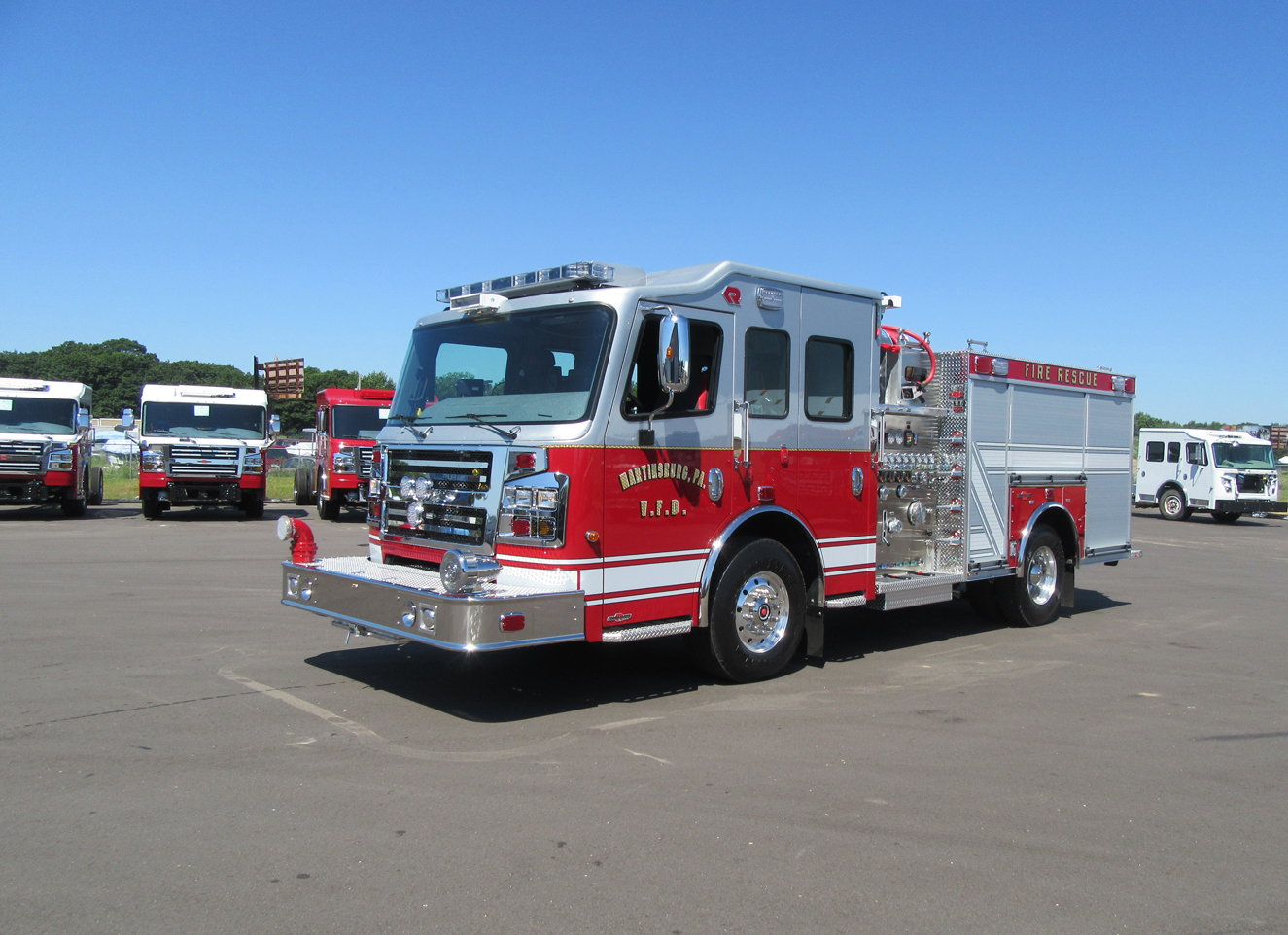Todd Berndt
Fremont, NE
Fremont, I think, is a very diverse community. We have all sorts of people. You see it just driving down the street, people are waving at one another. Todd Bernt, fire chief with the Fremont Fire Department. Been with the department 25 years and been fire chief the last five years.
It’s a growing community in the last couple years. We’re starting to see a little bit more growth coming around. We got an excellent public school system. We got Midland University in town, and we also have Metro Community College in town. So it’s actually a great town to learn in, with the education.
They’ve really done a good job of maintaining their identity, and that’s really what today’s challenge is with smaller communities, is maintaining your identity. And I think Fremont’s done a very good job of that. I work for Heiman Fire Equipment. We’re a full-line distributor in the fire service, and we’re also the Rosenbauer dealer for the upper 13 Midwest states.
Being a Fremont Fire Department, you have to know all the aspects of the job. Some of the bigger cities, you may be on one particular engine, rescue group, and that’s all you do. In Fremont, you have to be cross-trained and actually be able to do everything. What we wanted to incorporate with the Rosenbauer aerial that we got is to incorporate firefighter safety, and try to incorporate some technology to complement the staffing that we do have so we can work it with the least amount of staffing as possible.
The technology has been developed so that the firefighter, you know, for instance, as they’re lowering the ladder down on top of the apparatus itself, they can’t run into the apparatus. If they’re approaching a building, they can’t actually have the ladder make contact with the structure that they’re working on, things of that nature, that make the firefighters’ job easier and safer, given the fact that they’re not operating it on a frequently repetitive basis.
When the truck committee got together putting this spec together, our old aerial was a 30-year aerial. And that’s what we’d like to keep now– try to keep it for 30 years.
Because of the location of the factory, there was a longstanding relationship between the Fremont Fire Department and Rosenbauer.
A fire department chooses to go with the platform. They build it all there and attach it to the chassis. They test it all and make sure it’s all operational and operates the way we want it.
We had several meetings with them, and there was always follow-up information that we needed to have to take the next step forward. And they came back every meeting. Just, it was just unbelievable how well they were prepared.
The product that we see was a result of the firefighters. I hear it out from the community how such a beautiful truck it is. And the workmanship that they put into it, I think, is exceptional.
My name’s Alan Atkinson. I’m a Fremont firefighter with the City of Fremont Fire Department. This is our new Rosenbauer 100-foot Cobra aerial. Just wanted to show you around. We went with Commander series. We went with the vista screens to help control air, lighting, aerial operations.
As we come to the back of the cab, we integrated a center cabinet, EMS cabinet. We went with the 100-foot aerial. We have a 2,000 gallon-a-minute pump. With our manpower issues, we went with preconnected hose lines.
We went with tool boards in both of our upper compartments to hold our tools, to get them out of the lower compartments. As you can see, we carry axes, some small hand tools. We have roofing material in case we need to patch up a roof, a torch if we need to use it.
In this compartment, just some cleanup tools. And we also carry our high-rise hose inside here. Just some more shelving– we keep all of our aerial ladder belts in this compartment. The reason why we keep them in here is it’s close to the bucket and the ladder to climb up.
This is our saw compartment and our electrical compartment. We keep a chainsaw, a rotary saw. One of the things we did in the aerial bucket itself is we have a holder that the firefighter can take the chainsaw up. It’s not in the bottom of the bucket.
In the back of the truck is where we went and built the compartment to house our ladders. We have a full complement of ladders. We also keep our roof hooks and a long backboard for our Stokes basket that we put on the truck. We have the controllers for the aerial itself. And then we have the passenger-side controllers for outriggers.
One of the safety issues that we thought, as a committee, is trying to keep the firefighters off of the truck during inclement weather, reloading hose. So one of the features that Rosenbauer offered was an easy-load hose bed. The hose bed hydraulically comes down, and we can load our 5-inch large diameter hose, about 800 feet. And then also, once it goes back up, we have another short compartment with an extra 100 feet.
This is the easy-load. As you can see, it’s down to within a nice working height. The tarp comes back and we can actually physically load the large diameter hose from the ground and not have to get up on the truck to load it.
You don’t want anything bad happening in the community, but when something does, it’s going to be there. And I think it’s going to complement the fire department and the community the way we want it to.



